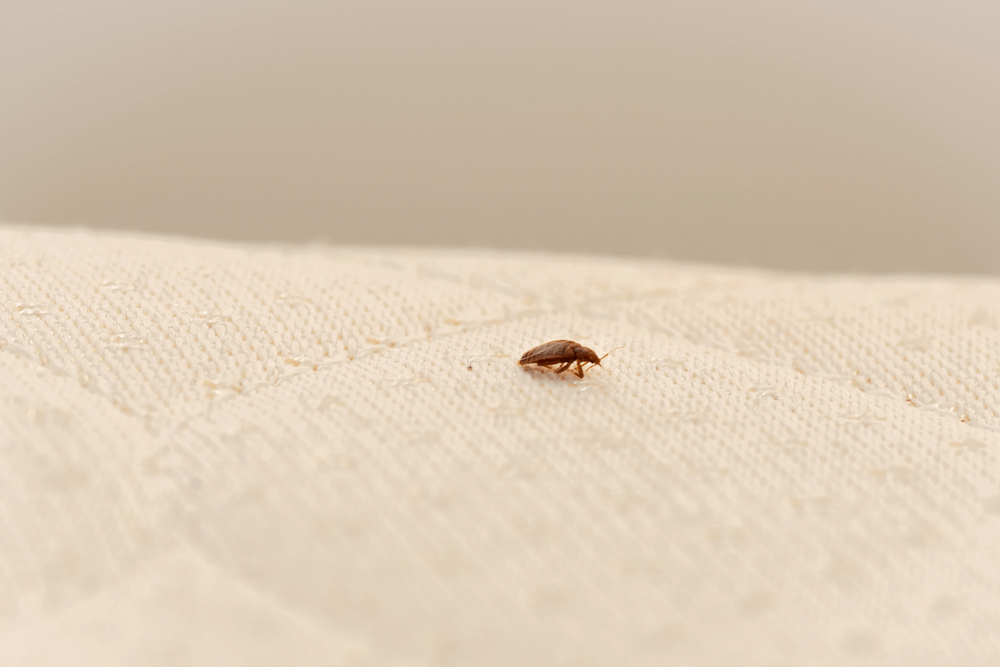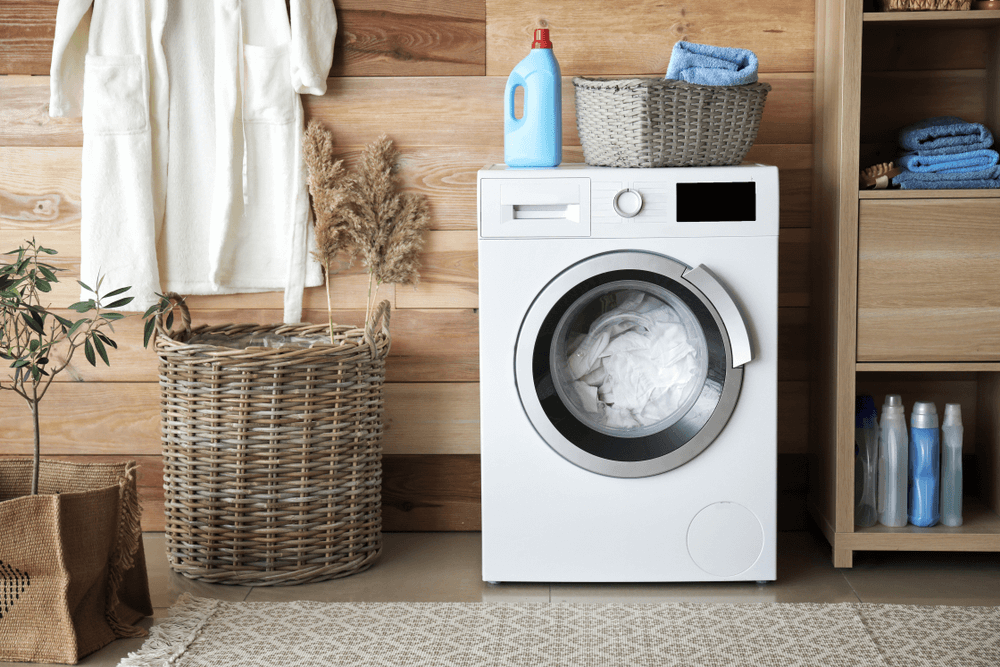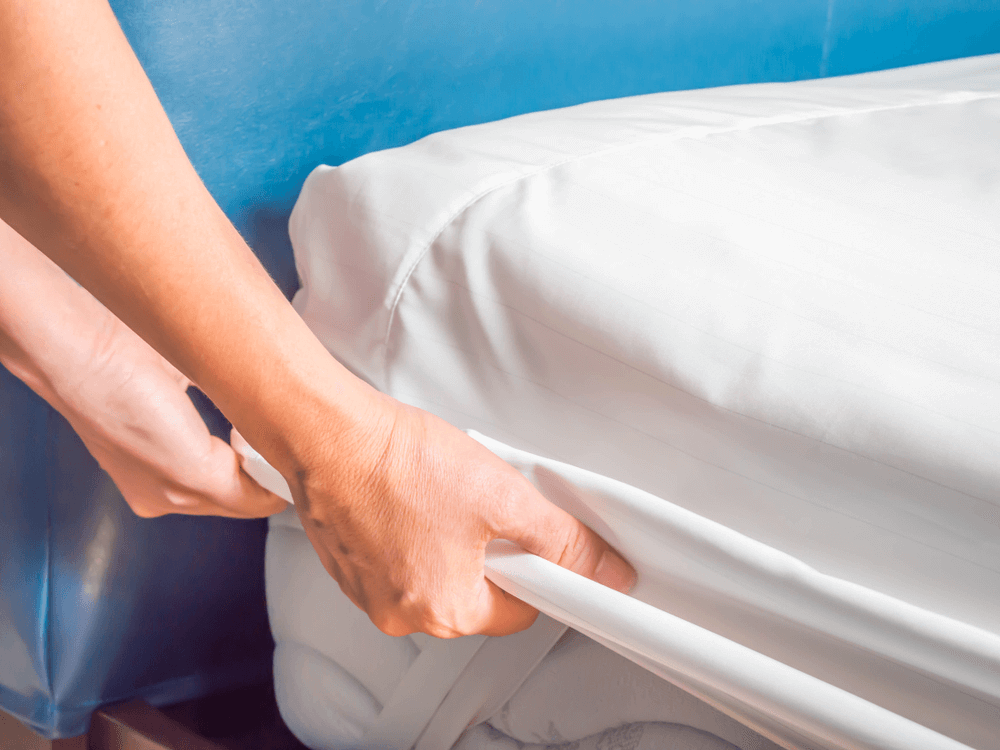Bed bugs can be a nuisance, and their presence could severely disrupt your peaceful sleep. Hence, it’s imperative to use bed bug mattress covers to keep these pesky critters at bay.
However, you might be wondering, “Can you wash bed bug mattress covers?” The answer is yes. So, in this article, we will provide a step-by-step guide to help you as well as some tips to prevent this problem.
Can You Wash Bed Bug Mattress Covers?
Yes, of course, you can and should wash your bed bug mattress cover. Regular washing can make it work better in keeping bed bugs away. But remember, it’s important to wash it correctly to avoid damaging them. So, keep reading to learn the right way to do it!

How to Wash Bed Bug Mattress Covers: Step-by-Step Guide
Here, we provide a step-by-step guide for the washing process to remove bed bugs:
Step 1: Preparing the Mattress Cover
First, take off your mattress cover. Do this slowly and gently to avoid ripping it. After that, go outside and shake the cover to get rid of dust, tiny bugs, or other little bits.
If you see any marks or stains on the cover, you should use a stain remover on them before you wash it. And remember to choose a gentle one to avoid damaging your cover.
Step 2: Washing process
If you wash by the washing machine, first, put your mattress cover in the washing machine. In the process, you should use gentle soap to avoid damaging the fabric of the cover. Next, put the right amount of soap in the machine – you can check the soap bottle for how much to use.
Moreover, you should set your washing machine to a “gentle” cycle, helping the machine won’t spin too hard and damage your cover. Also, the water should be warm, not hot – about 30 degrees Celsius (86 degrees Fahrenheit) is good.
If you wash it by hand. First, should fill a tub with warm water about 30ºC (86ºF). After that, you add the right amount of mild soap. Then put the cover in the tub and gently squeeze and release it for about 10-15 minutes, leading to the soap going into the fabric and cleaning it.

Step 3: Drying process
After the washing machine cycle is done, or after you’ve hand-washed it, take the mattress cover out. Don’t put it in a clothes dryer, this could make it shrink or change shape. Instead, hang it up in a cool, shady spot outside, or in a well-ventilated room inside.
Moreover, you also avoid putting the cover in direct sunlight. Because sunlight can make the color of the cover fade. Make sure the cover is totally dry before you put it back on the mattress. If it’s still a bit wet, this could make mold grow on it.
Tips To Avoid When Washing
- Don’t use hot water: Hot water might shrink or distort your mattress cover, making it less effective. Stick to warm or even cold water for washing.
- Skip the strong detergents: Harsh soaps can harm their material. Instead, go for a mild soap for cleaning.
- Gentle wash cycle: A hard wash cycle can damage them. So, opt for a gentle cycle for safe and efficient cleaning.
- Not machine drying: Though it’s faster, machine drying can cause your mattress cover to shrink. It’s better to let it air dry naturally.
- Avoid drying in direct sunlight: Sunlight can discolor your mattress cover. Try to dry it in a shaded outdoor area or an airy indoor space.
Read more: I Washed Leather With Soap Now Is Sticky: 3 Used Methods
Tips to Maintain The Mattress Cover Post Washing
We give you some tips to help you maintain its longevity after washing:
Correct folding techniques
The way you fold your mattress cover can affect its durability. So, you should avoid folding it too tightly, as this can create deep creases that may tear over time. Instead, roll the cover-up or fold it loosely. This technique reduces the chance of causing any creases or folds that could eventually turn into tears.
Keeping it clean
Also keeping your mattress cover clean is a critical part. Thus, you should wash your cover every two to three months. Regular washing keeps the cover fresh and in top condition to protect against bed bugs. However, remember not to overdo it. Too frequent washing might wear out the cover faster.
Regular reapplication
After washing and completely drying the mattress cover, reapply it to your mattress. Make sure to put it back properly so that it fits snugly and evenly. If you applied properly won’t have any loose sections that could not allow bed bugs to enter.

Storing process
If you ever need to store your mattress cover, the first step is to ensure it is completely dry. Storing a damp cover can lead to mold and mildew growth. Once it’s dry, find a cool and dry place to store it. Avoid areas with direct sunlight, as it can fade the cover over time.
Read more: How To Wash and Clean On Cloud Shoes: Effective Methods
Conclusion
In summary, you can and should wash your bed bug mattress covers. It not only helps maintain its effectiveness but also contributes to your overall bed hygiene. Following this comprehensive guide will ensure you wash, use, and maintain it properly, keeping it in the best condition for a long time.
FAQs
- Is it possible to dry a bed bug cover in a dryer?
Certainly, you can choose to dry your mattress cover in a dryer or let it air dry naturally, either under the sun or indoors with the aid of a fan. If you have a habit of using a fan while sleeping, you can easily shift the fan to the area where the cover is drying during the day.
- Can bed bugs survive inside a vacuum cleaner?
Interestingly, bed bugs can indeed survive within a vacuum cleaner. They're agile enough to escape through the vacuum hose and can potentially live inside the vacuum for several months, even without access to food!
- Is it possible to clean a mattress cover in a washing machine?
Absolutely, you can! Quality mattress protectors are designed to be as easy to clean as regular bed sheets. Typically, this means you can put them straight into your washing machine and dryer without any concerns.



